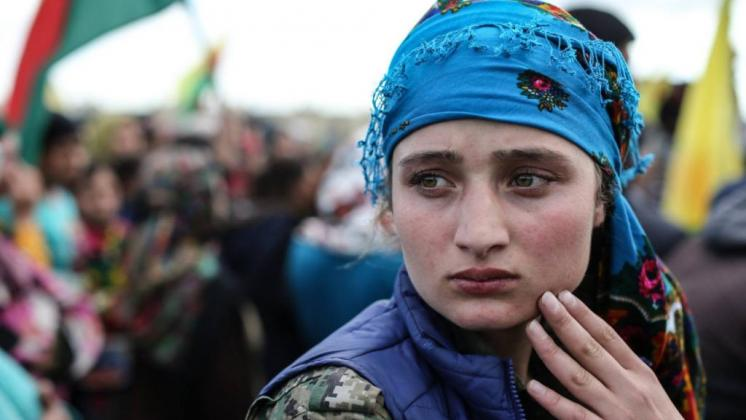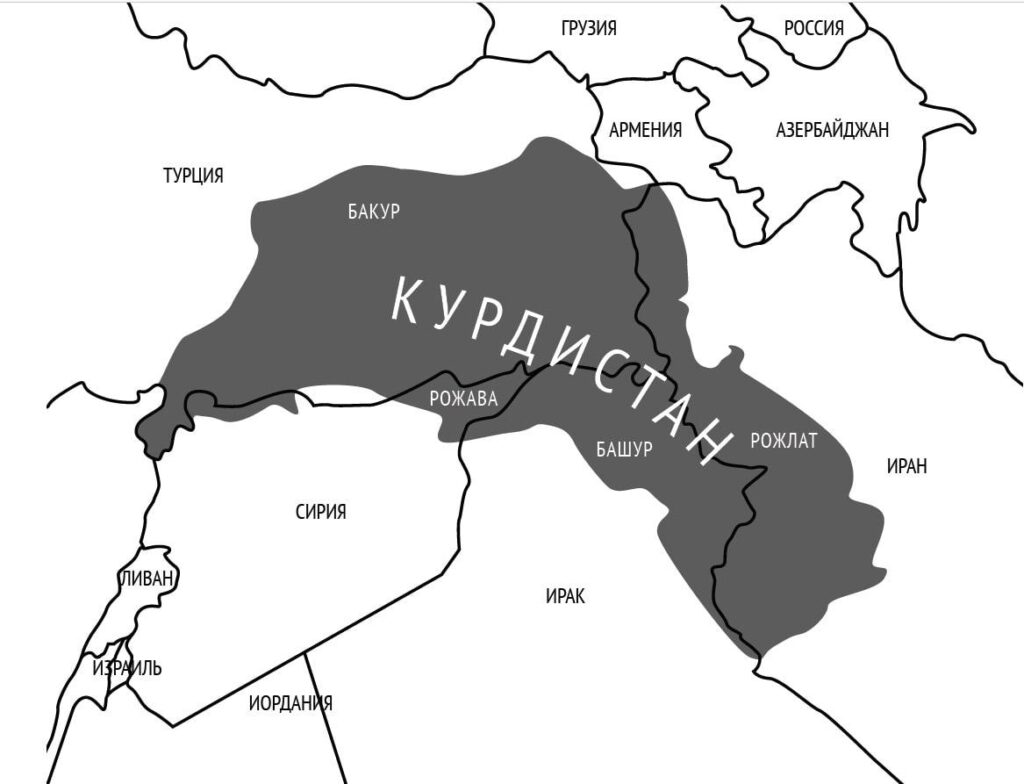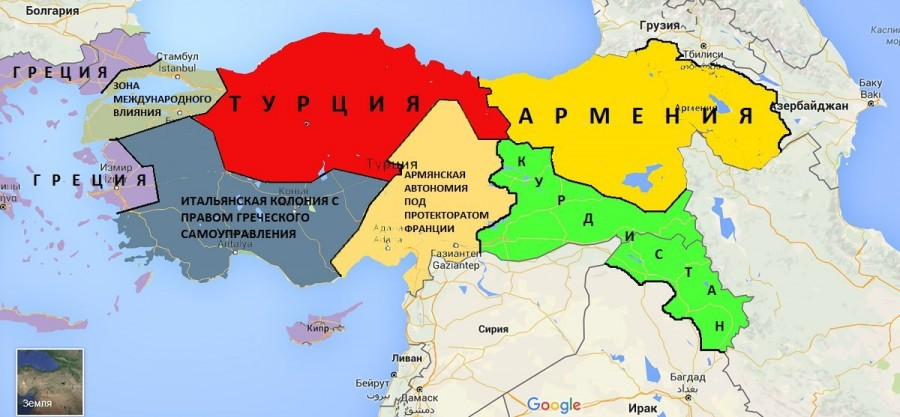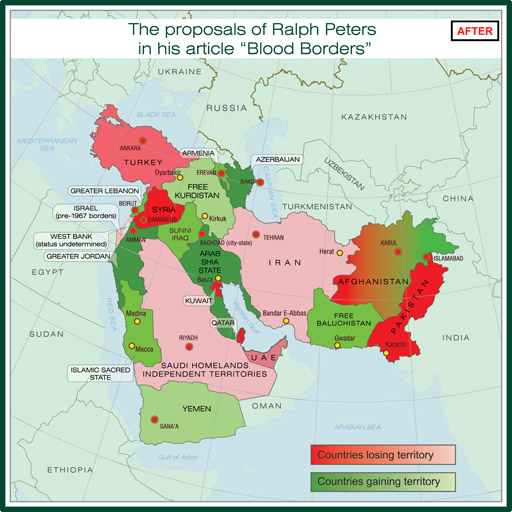
The creation of an independent and sovereign state of Kurdistan is a topic that has a long history and different visions for the implementation of this project.
The territory currently occupied by the compact Kurdish population is about 500 thousand km2. They live at the crossroads of Iraq, Turkey, Syria and Iran, as well as in a number of neighboring countries, not counting the diaspora elsewhere. In terms of population, approximately 8.1 million Kurds live in Iran (10% of the population), 5.5 million in Iraq (17%), 1.7 million in Syria (9.7%) and 14.7 million in Turkey ( 18 %).

Historically, the Kurds had a proto-statehood, which is why at the moment there are numerous speculations about the need for the Kurds to gain sovereignty. In Eastern Kurdistan from the end of the XII to the middle of the XIX century. the principality of Ardelan was located, which had to be reckoned with, and in Diyarbakir, Mardin, Aran, Ani, Dinaver, Shahrizur and Luristan at different times there were also separate independent principalities, which were ruled by the Kurdish dynasties. In the confrontation between the Ottoman Empire and Persia, the Kurdish principalities acted as outposts of the two states, which forced various Kurdish tribes to be loyal to one or another power and, accordingly, introduced a potential conflict between the Kurds in the future.
After the Sykes-Picot agreement, the Kurds also found themselves divided between zones of influence, and upon gaining independence by regional countries, they were again included in the citizenship of various states. Two attempts to create their own states in the twentieth century were doomed to failure – the self-proclaimed Ararat Kurdish Republic on the territory of Turkish Kurdistan in the 1920s. managed to exist for only three years, and the Mahabad Republic on the territory of Iran, declared in 1946, lived for less than a year.

External players used the Kurds at their discretion. If Israel began to support the Kurds for the reason of chronic inferiority (Ben Gurion’s expression) due to the encirclement by Arab countries (the same reason led to close interaction with the Shah’s regime of Iran until 1979), then the US had other perspectives and pragmatic strategies. For example, Iraqi Kurdistan became one of the bases for operations against Saddam Hussein in the 90s and 2000s. After the United States deployed bases in the cities of Erbil, Kirkuk and Mosul, and after the appearance of ISIS (a terrorist group banned in the Russian Federation), they justified their presence by the need to fight terrorism. But this concerned exclusively the military presence.
The well-known map of the bloody borders of the Middle East by Ralph Peters from 2006 shows Kurdistan as a monolithic state, created from parts of Turkey, Syria, Iraq and Iran, facing the Black Sea in the north. Even earlier, the late British-American historian Bernard Lewis proposed a similar scenario, although without access to the Black Sea (at the expense of Turkey), but with the absorption of almost all of Armenia and a small part of Azerbaijan. This option began to be developed at Princeton University as early as 1981, where Bernard Lewis held the position of professor in the Department of Middle East Studies.

However, in practice, the issue of obtaining states by the Kurds depends on two factors – 1) the political will of the Kurds themselves, which implies the elimination of internal contradictions and the development of a long-term consolidated strategy; 2) the collapse of the statehood of at least one of the four countries – Syria, Iraq, Iran or Turkey.
And the ideal project of an independent Kurdistan implies the unification of all four zones – Bakur, Mashud, Rojava and Rojilat (literally – North, South, West, East) – that is, Turkish, Iraqi, Syrian and Iranian territories inhabited by Kurds, but in the modern world such imaginary projects, as a rule, are far from their practical implementation.
Obviously, the Iraqi Kurds, who have their own autonomy, had the greatest opportunities for building statehood. However, the author, who has repeatedly visited Iraqi Kurdistan, did not receive an adequate answer to the question of how the Iraqi Kurds see the future statehood. There are discussions about this – some see it as more autonomy, others suggest a republican type of government, and some even advocate the creation of a monarchy.
The civil war that broke out in Iraqi Kurdistan in 1994 and ended in 1998 with the signing of a peace agreement between Massoud Barzani (Kurdish Democratic Party) and Jalal Talabani (Patriotic Union of Kurdistan) mediated by the United States is also an additional confirmation of the internal contradictions between the Kurds. Although the issues of internal self-government in Iraqi Kurdistan are now being resolved peacefully, the orientation of the KDP towards Turkey and, in part, towards the United States, while the PUK towards Iran remains.
In addition, there are cultural differences. Kurds use different dialects of the language. Even in Iraqi Kurdistan, Kurmanji and Sorani are used, and recently there has been talk of the emergence of a third dialect based on a mixture of the two. In addition, there is the South Kurdish language and the Laki language (both spoken in Iran and Iraq).
In Syrian Kurdristan (Rojava), the issue of self-government was raised quite late – in 2012, when Syria itself was being shaken both from the outside and from the inside. At the same time, the YPG People’s Protection Units were created. At the same time, contradictions with the Iraqi Kurds of the Barzani clan immediately surfaced.
The Democratic Union Party (PYD), which consisted of local Syrian Kurds, and another entity, the Kurdish National Union, which is affiliated with the Kurdish regional government of Iraq, failed to agree on the distribution of power, which caused tensions on the ground. The YPG even
vehemently opposed allowing Iraqi Kurdish Peshmerga forces into Syrian territory to help fight ISIS. In addition, the PYD accused Barzani of links with the Turkish leadership and preferred to contact the PKK in Turkey directly.
In March 2016, the Kurdish administration in three districts in northern Syria: Jazeera, Koban and Afrin announced the creation of the Federation of Northern Syria – Rojava. This was a clear attempt to deploy a single political umbrella over certain geographical areas, controlled by the PDS and its
YPG military units.
But in August, Turkey moved its troops into Syria, creating its own security zone and starting a rapprochement with Russia. These events have undermined the efforts of the PYD and their allies, and the current return of the Syrian armed forces to the zone and the Russian military police has sharply limited any chance for real Kurdish sovereignty in Syria.
Turkey is the country with the largest number of Kurds both in relation to the main Turkic population and in relation to the territory. The PKK has been designated a terrorist organization in Turkey. At the same time, not all Turkish Kurds agree with the program and activities of this party. Although the ruling Justice and Development Party does not have an objectively inclusive project for all Kurds.
The rights of the Kurds are defended by the People’s Democratic Party (Halkların Demokratik Partisi). In fact, this is a coalition of various left-wing parties and trade unions, which included the Kurdish Peace and Democracy Party. Through this structure, the Kurds legally lobbied for their interests. However, any attempts at separatism or any hint of links with the PKK are severely suppressed by the state. In 2016, the Kurdish leaders of this party, including the head of Salakhetidin Demirtas, were arrested on charges of aiding terrorists. At the same time, Ankara rejected the accusations and demands of the ECHR in this case. And in August 2019, three pro-Kurdish mayors from this party were removed from their posts.
The operation of the Turkish armed forces in Syria and air strikes on the Kurdish territories of northern Iraq, where the PKK bases are located, testify to Ankara’s serious intentions regarding the consolidation of the Kurds in the region and the challenges that they may throw to the Republic of Turkey.
The activities of any Kurdish political structures are prohibited in Iran. The Islamic Revolutionary Guard Corps exercises close supervision over any activity that is contrary to the form of government and ideology of the Islamic Republic of Iran. Kurdish militants regularly attack guards and officials, in response to which the authorities are forced to carry out repressions. Kurdish political activists and dissidents from Iran are forced to hide in Iraqi Kurdistan. In Iran, the chances of the Kurds even for self-government are doomed to failure.
In addition, you need to understand that any precedent related to the political strengthening of the Kurds will cause strong opposition not only in a certain country, but also among neighbors. Thus, the holding of a referendum in Iraqi Kurdistan, which took place in September 2017, provoked a protest not only from Baghdad, but also from Turkey and Iran, which are sensitive to issues of separatism. And since even in a worse situation in terms of centralization of power in Iraq and Syria, the Kurds could not reach a compromise among themselves and create a semblance of a federation, such an opportunity is unlikely to be presented again in the near future. Therefore, the state of the Kurds for many years to come will be only a desirable, but unattainable dream.
